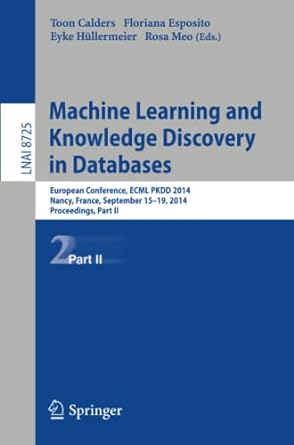Question
C++ need help with Ex4 History.in---------------------------------------------- The Abacus (which appeared in the sixteenth century) was the first calculator. In the middle of the seventeenth century
C++ need help with Ex4
History.in----------------------------------------------
The Abacus (which appeared in the sixteenth century) was the first calculator. In the middle of the seventeenth century Blaise Pascal, a French mathematician, built and sold gear- driven mechanical machines which performed whole number addition and subtraction. (Yes, the language Pascal is named for him.) Later in the seventeenth century a German mathematician Gottfried Wilhelm von Leibniz built the first mechanical device designed to do all four whole number operations: addition, subtraction, multiplication and division. The state of mechanical gears and levers at that time was such that the Leibniz machine was not very reliable. It wasn't until the nineteenth century that the next major step was taken, this time by a British mathematician. Charles Babbage designed what he called his analytical engine. His design was too complex for him to build with the technology of his day, so his design was never implemented. His vision, however, included the important components of today's computers. His design was the first to include a memory so that intermediate values did not have to be re- entered. His design also included the input of both numbers and mechanical steps on a type of punched card developed in the late eighteenth century by Joseph Jacquard to be used with a mechanical loom. Ada Agusta, Countess of Lovelace, was a most romantic figure in the history of computing. Ada, the daughter of Lord Byron (the English poet), was herself quite a mathematician. She became interested in Babbage's work on the analytical engine and extended his ideas (and corrected some of his errors). Ada is credited with being the first programmer. The concept of the loop--a series of instructions that repeat--is attributed to her. Ada, the language used by the Department of Defense, is named for her. During the later part of the nineteenth century and the beginning of the twentieth century advances were made rapidly. William Seward Burroughs produced and sold a mechanical adding machine (that worked!). Dr. Herman Hollerith developed the first electro-mechanical tabulator which used a punched card. Data was represented by holes punched on the card in certain positions. Descendants of this card are still in use today. Dr. Hollerith formed a company that is known today as IBM. In 1936 a theoretical development took place that had nothing to do with hardware per se but profoundly influenced the field of Computer Science. Alan M. Turing, another British mathematician, invented an abstract mathematical model called a Turing machine, laying the foundation for a major area of computing theory.. The most prestigious award given in Computer Science (equivalent to the Fielding Medal in Mathematics or a Nobel Prize in other sciences) is the Turing Award, named for Alan Turing. A current Broadway play deals with his life. Analysis of the capabilities of Turing machines is a part of the theoretical studies of all Computer Science students. By the outbreak of World War II, several computers were under design and construction. The Harvard Mark I and the ENIAC are two of the more famous machines of the era. John von Neumann (an American mathematician this time) who had been a consultant on the ENIAC project started work on another machine known as EDVAC which was completed in 1950. In 1951 the first commercial computer, UNIVAC I, was delivered to the Bureau of the Census. Von Neumann is credited with the development of two very important concepts. The first is that the instructions that operate the machine should be stored in the machine along with the data to be operated on. The second is that data (and instructions) should be represented in the binary number system rather than the decimal number system.
The general organization of a computer has remained constant over the last 40 years. This organization or architecture is based on the ideas of von Neumann and bears his name. The essence of this architecture is sequentiality. That is, instructions (a program) are stored in sequential memory locations in binary form and are executed in sequence, one after the other.

Step by Step Solution
There are 3 Steps involved in it
Step: 1

Get Instant Access to Expert-Tailored Solutions
See step-by-step solutions with expert insights and AI powered tools for academic success
Step: 2

Step: 3

Ace Your Homework with AI
Get the answers you need in no time with our AI-driven, step-by-step assistance
Get Started


